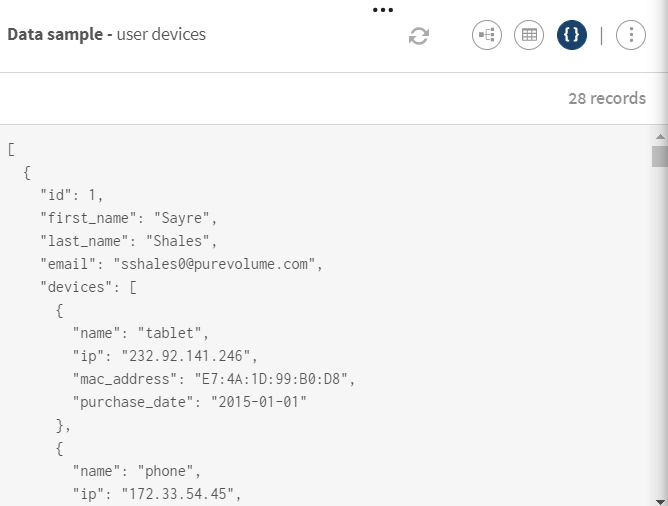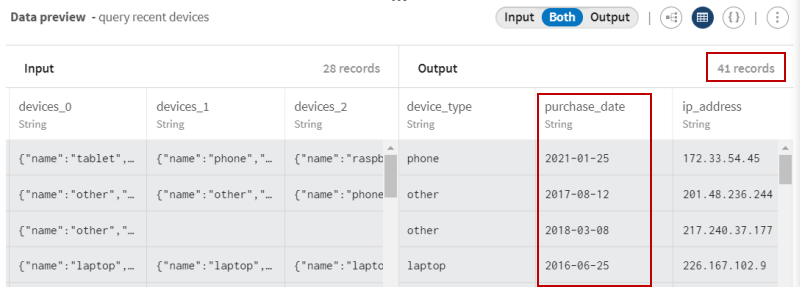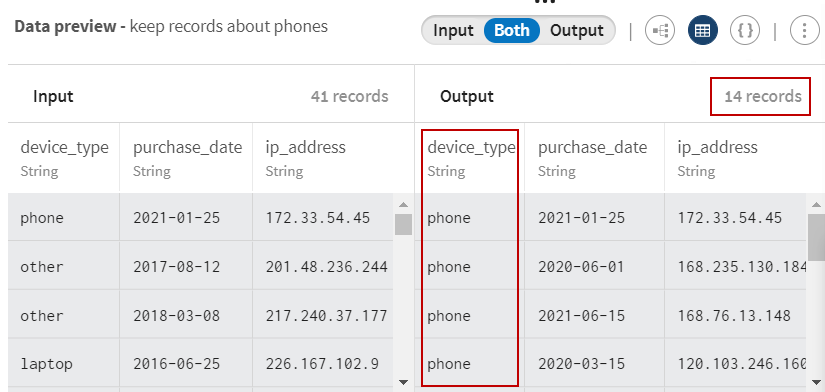Processing a list of user devices using queries

Before you begin
-
You have previously created a connection to the system storing your source data.
Here, a Test connection.
-
You have previously added the dataset holding your source data.
Download and extract the file: query_language-devices.zip. It contains a .json hierarchical file with a survey about users devices including the type of devices, their purchase date, IP addresses, etc.
-
You also have created the connection and the related dataset that will hold the processed data.
Here, a file stored on an S3 bucket.
Procedure
Results
Your pipeline is being executed, the data is processed according to the conditions you have stated using the query language and the output is sent to the target system you have indicated.
Did this page help you?
If you find any issues with this page or its content – a typo, a missing step, or a technical error – let us know how we can improve!



